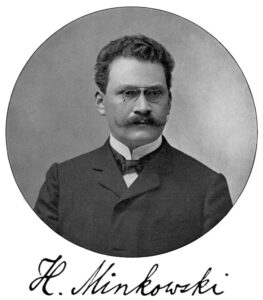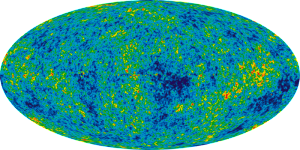Science Seen Physicist and Time One author Colin Gillespie helps you understand your world.
Ideas Live!
Philosophy involves the study of ideas. Yet some (like Stephen Hawking) say philosophy is dead. Others (such as Neil deGrasse Tyson) say philosophy may be alive but its ideas have no use in physics. Both of these exemplars hold the degree of Doctor of Philosophy so they should know. But so do I and I think they are big-time out of line.
Ideas matter. Of them, Wikipedia says: The capacity to create and understand the meaning of ideas is considered to be an essential and defining feature of human beings. Few ideas matter more than our concepts of space and time. They underpin both natural philosophy and fundamental physics. So they also support today’s economy. You might think we’d get such basic concepts right when teaching them to physics students. You’d be wrong.
Here I don’t mean recent concepts about time and space quanta. I mean concepts grounded in a century of physics. Here’s the nub: Physics students are taught not time and space but spacetime. This goes back to Albert Einstein and special relativity. British physicist Sir Roger Penrose says:
Despite what appears to be the common perception on this matter, and despite Einstein’s quite superb use of this idea in his framing of the general theory of relativity, spacetime was not Einstein’s original idea nor, it appears, was he particularly enthusiastic about it when he first heard of it.
 Penrose doesn’t mention that Einstein saw its limitations and moved on.
Penrose doesn’t mention that Einstein saw its limitations and moved on.
Spacetime’s history in brief: German mathematician Hermann Minkowski mints it—based on special relativity—in 1907. In a propaganda blitz he claims he has abolished the distinction between space and time. It’s nonsense but its math is tidy and symmetrical. Physicists fall for it in droves. Even Penrose’s The Road to Reality—the universal Bible for the last ten years—has an entire uncritical chapter on it, with a four-page ramble on ‘The Abandonment of Absolute Time’.
Absolute space and time are observed properties of the universe. Relativity and spacetime provide a useful basis for manipulating local measurements. They assume the nonexistence of an observable absolute frame of reference. It’s been fifty years since observations showed this to be wrong. The universe itself provides an absolute frame of reference. Cosmologists observe it by measuring the cosmic microwave background. (Google CMB to see it for yourself.) And spacetime sets a maximum relative speed, the speed of light. Belgian physicist Georges Lemaître proposed Hubble’s Law in 1927 and American astronomer Edwin Hubble confirmed it two years later. It shows that most of the universe is moving faster than light speed relative to us. That’s just the kind of universe it is.
basis for manipulating local measurements. They assume the nonexistence of an observable absolute frame of reference. It’s been fifty years since observations showed this to be wrong. The universe itself provides an absolute frame of reference. Cosmologists observe it by measuring the cosmic microwave background. (Google CMB to see it for yourself.) And spacetime sets a maximum relative speed, the speed of light. Belgian physicist Georges Lemaître proposed Hubble’s Law in 1927 and American astronomer Edwin Hubble confirmed it two years later. It shows that most of the universe is moving faster than light speed relative to us. That’s just the kind of universe it is.
Spacetime, like special relativity, is not about the universe or its space and time. It is about the math of measurements and local light. In its place it can be convenient. But the universe does not actually have the properties that it purports to describe. Cosmologists have known this for a long time. Other physicists are coming around to this view. For example, American physicist Nima Arkani-Hamed says:
Spacetime is doomed. There is no such thing as spacetime actually in the fundamental underlying laws of physics.
What we teach physics students is convenient for doing certain calculations. But it is entirely wrong for understanding our universe. It’s no wonder that they are confused.
Is it a coincidence that physics is now distant from philosophy (or vice versa)? These days, physicists are focused on their math. Most of them have wrong concepts of space and time. Many are uncareful in their use of words. Words, not math, give human beings language for ideas. Without contact with the wide world of ideas, physicists are lost. It’s not so long ago that physics was philosophy (that’s why Hawking and Tyson sport those PhD’s). Both disciplines were more productive then. We (who pay the bills and hope for more production) need physics and philosophy to re-engage. Meantime, let’s teach students concepts that help them to think about the real world.
Sources:
Wikipedia (2015), “Idea”, accessed 18 February, http://en.wikipedia.org/wiki/Idea
Roger Penrose (2005), The Road to Reality: A Complete Guide to the Laws of the Universe, London: Vintage Books, p. 383; http://www.amazon.ca/The-Road-Reality-Roger-Penrose/dp/0099440687
Nima Arkani-Hamed (2010), “Setting the Stage: Space-Time and Quantum Mechanics”, CornellCast, Cornell University, October 18, http://www.cornell.edu/video/nima-arkani-hamed-quantum-mechanics-and-spacetime
Other reading:
Marcus Arvan (2014), “DeGrasse-Tyson: Unfair to philosophy, but also a wake-up call?”, The Philosophers’ Cocoon, May 10, http://philosopherscocoon.typepad.com/blog/2014/05/degrasse-tyson-unfair-to-philosophy-but-a-wake-up-call.html
Image credits:
John, “Minkowski Spacetime”, The Computus Engine, http://www.computus.org/journal/minkowski-spacetime/
WMAP Science Team, NASA, http://map.gsfc.nasa.gov/media/121238/ilc_9yr_moll4096.png

No comments yet.